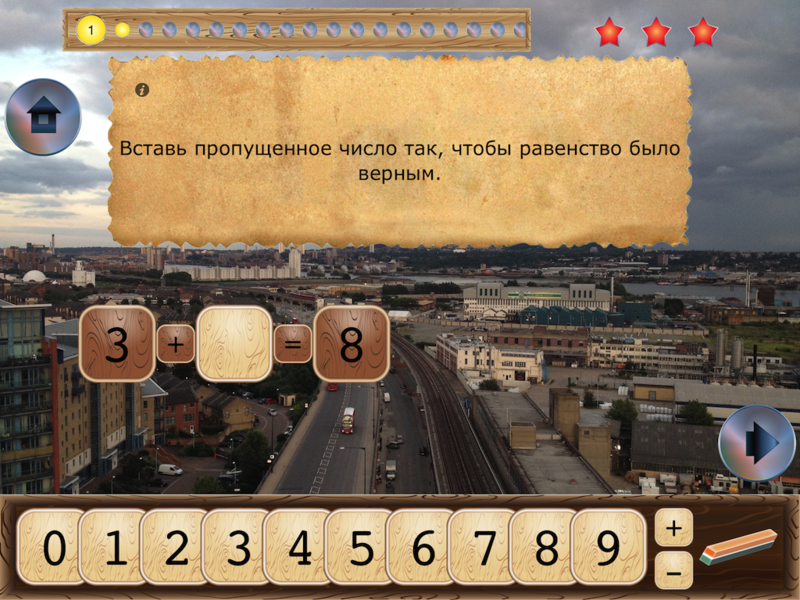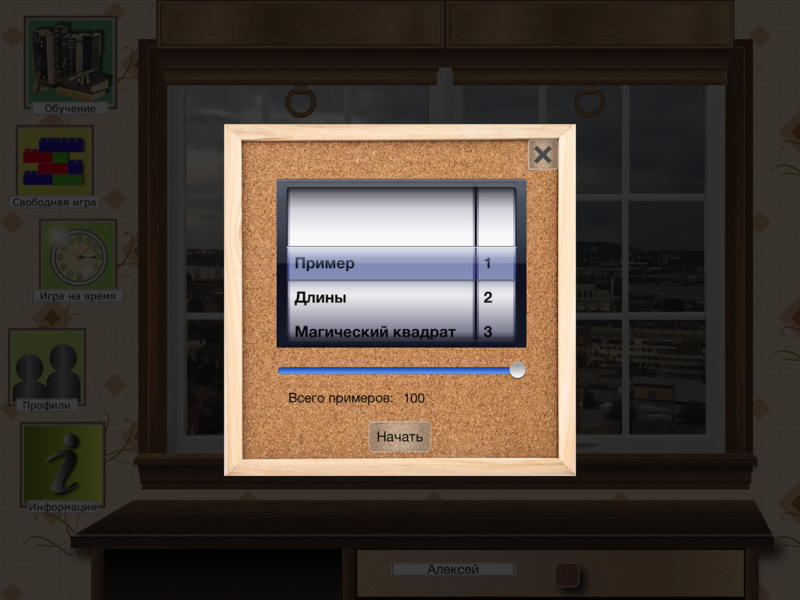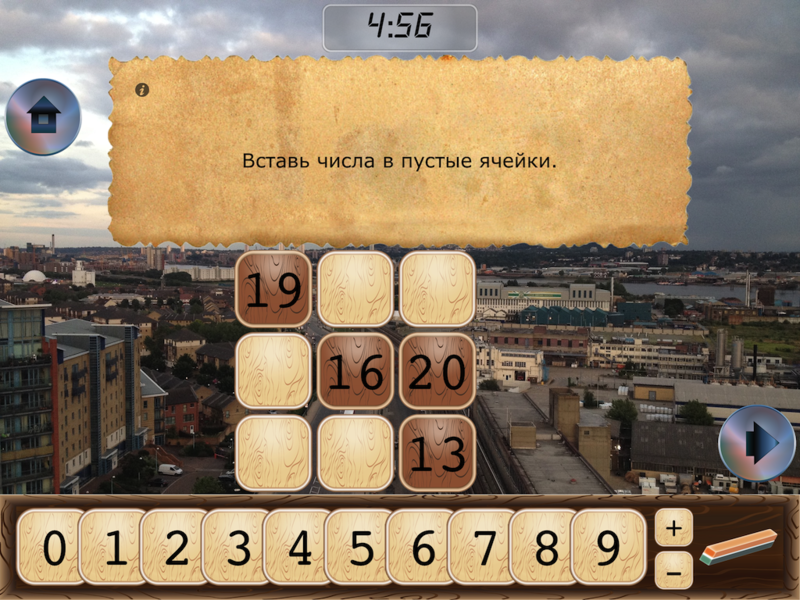Drag-the-Digit for iPad. How we learned to count in mind or Our first application
"The first project ... He's the favorite!"
Hello, dear readers of Habr!
Preface.
We really do not want our work to be wasted. We believe that the project will be useful to quite a large number of users. That is why we make it absolutely free and without advertising. Nevertheless, we plan to continue its support, refinement and development.
')

The first story.
I have a younger sister who is in the third grade. More recently, in the past academic year, in mathematics it (as, indeed, all of us once) was taught to solve various simplest examples, equations, and problems. Of course, this is a very important stage in mastering everything. Therefore, my mother made (and makes) every effort to ensure that the training was held at the highest level. She offers her sister different tasks and examples to work out the account, and all this, of course, tasks to the oral account. We have already come close to the problem: we need to solve many, many examples, perfect our skills, so to speak, but here different and not always pleasant circumstances take place on the stage. It is necessary somewhere to take examples for the decision. Buy a thin little book and solve it? Good, but not limited to one, and children's educational literature is not so cheap. Write tasks yourself? Okay, 10 pieces I will do, and more? Leaking precious time. Need a better solution.
The second story.
I am also learning. I just study not at school, but at the institute. The most important thing is that my learning with red thread is interlaced with programming. I am very happy about it, I like this activity, but I think everyone will agree that the study of various algorithms, their implementation is not so exciting, because there is simply no visible result. Yes, I see, for example, how cool heapsort deals with a hundred millionth array, or how with the help of the Huffman algorithm you can squeeze a picture, then unpack it and ... rejoice. But the joy is not complete, because the things that surround us have their own face, people interact with them through interfaces. Against this background, my friend and I decided to write our own, first, project, to make it from beginning to end, after comprehending Zen. In general, I didn’t have to choose a platform, I have been using iOS devices for quite a long time, and therefore we decided to write for it. It was not necessary to buy devices for testing (although no, I had to, I killed my tablet, which is my fault).
Third story
(descendant of History 1 and History 2).Actually, the idea was born to create an oral simulator. Mom is responsible for the content, as a verbal account guru, but we are responsible for implementation with a friend. Since we could not imagine our plans on the tiny screen of the phone or player, we decided to write for the iPad. It took quite a long time from the birth of the idea to the beginning of its implementation, simply because we simply did not have time. I do not consider it necessary to describe the development process (although, perhaps, in a separate article we will open a couple of interesting elements of the application).
Story 4.
So, let's fast forward a couple of months. Meet the Drag-the-Digit - our first brainchild. As planned, we got a pleasant and fun way to get the child to learn how to count quickly. What could be simpler than dragging a digit into a cell? By the way, this method was adopted not immediately, but we are very glad that we chose it. The essence of the gameplay is as follows. An example appears on the screen, which, of course, must be solved. Suppose a term is omitted in the sum, the child drags the desired digits into the empty cell with a finger, and then the correctness of the answer is checked. On this simple mechanism, several types of tasks work from equations to a magic square, and the complexity can vary from elementary to decent (decent so that many adults do not even want to consider such numbers, although they are no more than double digits).
We implemented three different modes.
Training mode

Here we have done 53 levels, with 20 tasks in each. The difficulty is increasing as you progress. We fundamentally banned the possibility to go further without deciding an example. There is a condition: I made a mistake three times - please start the level again. Guaranteed, with a fair decision, the child will learn to count in his mind!
Free mode.

Everything is simple here - choose the task, put the number and go!
Mode for a while.

5 minutes. During this time you can do a lot of things. And you can solve primerchiki. An example is given randomly (type and complexity are also random). Not decided - got the next one.
Among other things, we have implemented a profile system. Even if you don’t have to create several, it will come in handy. You can view statistics, monitor progress.

This is, in fact, all that I wanted to tell. It would be very interesting to know your suggestions in terms of improving the project.
[iTunes Link]
PS
We really do not want our work to be wasted. Use on health!
Source: https://habr.com/ru/post/151579/
All Articles